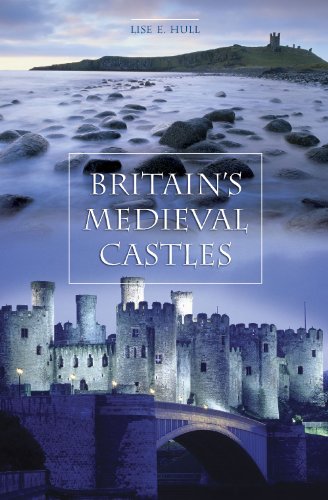

Most ebook files are in PDF format, so you can easily read them using various software such as Foxit Reader or directly on the Google Chrome browser.
Some ebook files are released by publishers in other formats such as .awz, .mobi, .epub, .fb2, etc. You may need to install specific software to read these formats on mobile/PC, such as Calibre.
Please read the tutorial at this link: https://ebookbell.com/faq
We offer FREE conversion to the popular formats you request; however, this may take some time. Therefore, right after payment, please email us, and we will try to provide the service as quickly as possible.
For some exceptional file formats or broken links (if any), please refrain from opening any disputes. Instead, email us first, and we will try to assist within a maximum of 6 hours.
EbookBell Team

4.7
26 reviewsThe widespread construction of castles in Britain began as soon as Duke William of Normandy set foot on the shores of southern England in 1066. The castles that were constructed in the ensuing centuries, and whose ruins still scatter the British countryside today, provide us with an enduring record of the needs and ambitions of the times. But the essence of the medieval castle—a structure that is equal parts military, residential, and symbolic—reveals itself not only through the grandeur of such architectural masterpieces as the Tower of London, and the imposing nature of such royal residences as Windsor, but also in the aging masonry carvings, enduring battlements, and more modest earthen ramparts that have survived alongside them. Through a feature-by-feature account of the architectural elements and techniques used in constructing the medieval castle, author Lise Hull allows the multiple functions of these multifarious forms to shine through, and in so doing, lends a new vitality to the thousand faces that the medieval world assumed to discourage its enemies, inspire its friends, and control its subjects.
This compelling investigation takes a unique look at each of the medieval castle's main roles: as an offensive presentation and defensive fortification, as a residential and administrative building, and as a symbolic structure demonstrating the status of its owner. Each chapter focuses on one specific role and uses concrete architectural features to demonstrate that aspect of the medieval castle in Britain. A wealth of illustrations is also provided, as is a glossary explaining the distinct parts of the castle and their functions. This book should be of interest to students researching architecture, the Middle Ages, or military history, as well as general readers interested in castles or considering a trip to Britain to observe some of these magnificent sites themselves.